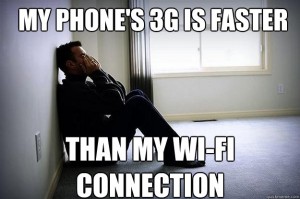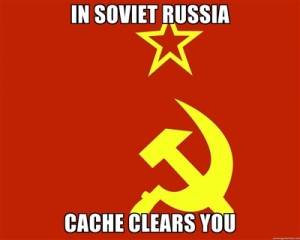Tips For Maximizing Your Connectivity to PlayStation Home
by NorseGamer, HSM Editor-in-Chief
Nothing’s worse than being in the middle of a really intense game session in Home — and then you get an indecipherable error code.
Sometimes, it’s a problem on Home’s side. Sometimes it’s even due to malicious user behavior. But sometimes, it’s a problem you can fix on your end.
As new PlayStation Home spaces and games become increasingly complex, it’s important to maximize the stability of your internet connection to Home. Along those lines, a few tips and/or reminders, in case you ever find yourself frustrated by reduced connectivity.
Note: this article assumes your PS3 already has an established internet connection, and that you are experiencing difficulties in maintaining a stable connection to Home.
1. Is your router’s firmware up to date?
Router manufacturers periodically provide firmware updates to their products. If you’re using an older router, make sure its firmware is up to date, as this will improve its consistency and overall performance.
2. Is your router optimally positioned for maximum reception?
Wireless signals can be disrupted by Radio Frequency interference, such as a cordless phone running at 2.4 gHz. And, likewise, distance can play a factor; if you’re really far away from the router and there’s lots of mass between you and the signal, this can and will cause signal degradation.
 3. Have you tried a wired connection?
3. Have you tried a wired connection?
If your router gives you headaches, you can always plug an ethernet cord from the modem directly to the PS3. Wired connections, by their very nature, are typically more consistent and reliable than a wireless signal.
4. How many devices are tapping into your router?
The more internet connections your router is supplying, the greater the strain on its available bandwidth. And let’s face it, Home can be very demanding at times, particularly if you’re in a really intensive spot such as the Virtual E3 pavilion or one of Home’s newer games, like No Man’s Land or Mercia.
5. How secure is your router?
Along the same lines as #4, you want to protect against outside intrusions, both for security reasons and to protect your bandwidth. If you haven’t set up a passphrase for your router yet, you’re basically advertising to the world that you’re offering free internet for them to pirate off of you. Ideally, your passphrase should be random and comprised of no less than thirteen characters, in order to minimize the odds of a brute-force attack successfully cracking it. Chances are your neighbors aren’t that determined to steal your bandwidth, but you don’t want to have it just floating out there for them to take, either.
 6. Have you cleared your Home cache?
6. Have you cleared your Home cache?
This step is one that’s often overlooked or forgotten. Just as you would periodically clear your internet browser’s cache (and clear out all the cookies), you’ll want to occasionally clear your Home cache. This will not cause you to lose furniture layouts in your personal estates, avatar settings or anything else. However, you will notice that aside from the inconvenience of having to re-download places you like to visit, you’ll probably have a more stable connection and a shorter sign-in time.
7. How about your physical cable line?
This assumes you’re using a cable service to connect to the internet. Many older residences in the United States still use RG-59 cable, both from the street to the residence and within the residence itself. For digitally-intensive applications, you’re far better off if you upgrade to RG-6 cable. Note that while your cable company can replace lines outside your residence, work inside the house itself should be completed by a qualified electrician. This option may not be feasible to all the people on this forum, but if you’re in a position to do this, you’ll notice an overall increase in your connection’s stability and strength.
8. Try disabling your PS3’s Media Server Connection.
If your PS3’s Media Server Connection is enabled, this can interfere with your internet connectivity. Go to your Network Settings on your PS3’s XMB and disable this feature.
9. Power-cycle your equipment.
Sometimes, you just have to unplug your network devices — modem, router, etc. — for a couple of minutes. Plug them back in and see if it makes a difference.
10. It might just be your console.
Although the PS3 is a very durable piece of hardware with a low failure rate, there’s always the chance that there just might be something wrong with the specific machine you’re using. The easiest way to test this is to plug in a second console if you have one or can borrow one from a friend, and then run an internet connection test on it. If there’s a consistent discrepancy in connectivity between the two machines, and all other variables have been eliminated, then you’re going to want to consult PlayStation’s Consumer Services Department at (800) 345-7669.
Hopefully this article helps you maintain your connection to PlayStation Home!




 LinkedIn
LinkedIn Twitter
Twitter
Thanks for these helpful pointers. A few old tricks and a few new ones to try out before reading my PS3 its last rites:)